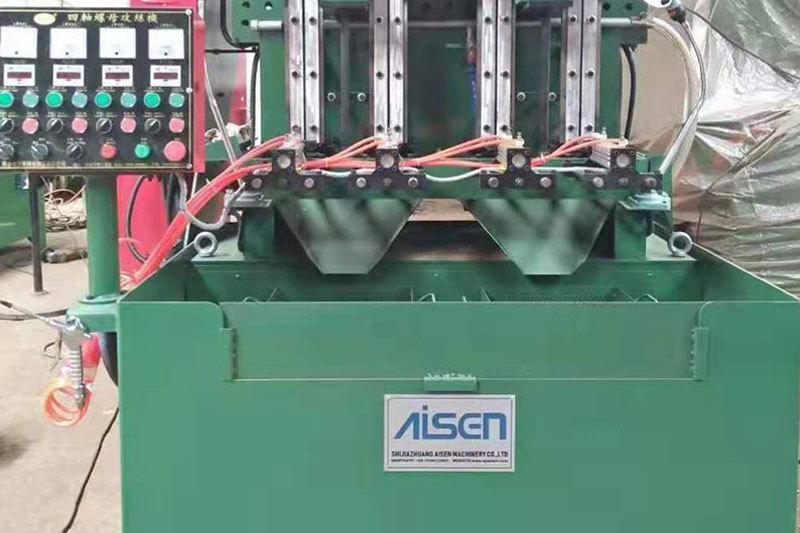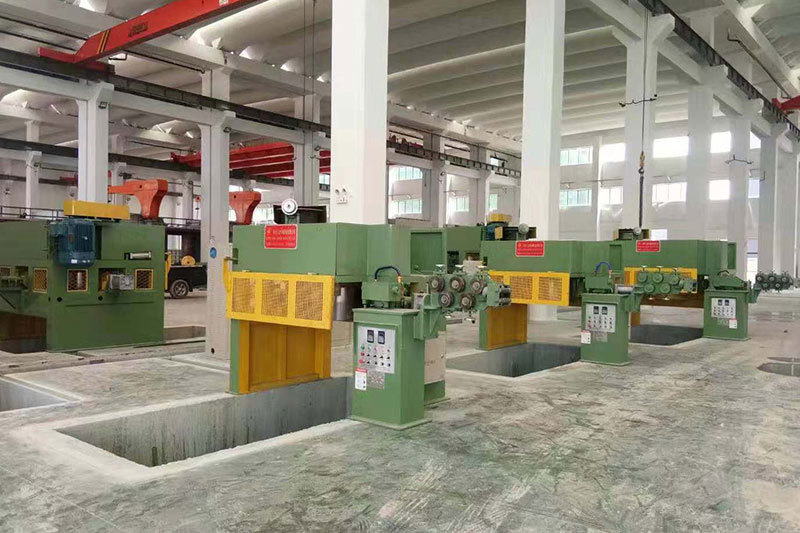The Science Behind Bolt Cold Forging Machines: An In-Depth Exploration
Summary:
The Science Behind Bolt Cold Forging Machines Explained
Table of Contents
1. Introduction to Bolt Cold Forging Machines
2. What is Cold Forging?
3. Benefits of Cold Forging in Manufacturing
4. How Cold Forging Works: The Process Explained
5. Key Components of Cold Forging Machines
6. Applications of Bolt Cold Forging Machines
7. Common Materials Used in Cold Forging

The Science Behind Bolt Cold Forging Machines Explained
Table of Contents
- 1. Introduction to Bolt Cold Forging Machines
- 2. What is Cold Forging?
- 3. Benefits of Cold Forging in Manufacturing
- 4. How Cold Forging Works: The Process Explained
- 5. Key Components of Cold Forging Machines
- 6. Applications of Bolt Cold Forging Machines
- 7. Common Materials Used in Cold Forging
- 8. The Future of Bolt Cold Forging Technology
- 9. Conclusion
- 10. FAQs about Bolt Cold Forging Machines
1. Introduction to Bolt Cold Forging Machines
In the world of manufacturing, precision and efficiency are paramount. **Bolt cold forging machines** have emerged as pivotal tools in producing high-quality fasteners, particularly bolts. These machines utilize a process that not only enhances the strength of the materials but also reduces waste and energy consumption. In this article, we delve deep into the science behind these machines, exploring their mechanisms, advantages, and future potential.
2. What is Cold Forging?
Cold forging is a manufacturing process that involves shaping metal at or near room temperature. Unlike traditional forging methods that involve high heat, cold forging applies pressure to deform the material without melting it. This process leads to several advantages:
- **Improved Material Strength**: The cold working process aligns the crystalline structure of the metal, resulting in enhanced mechanical properties.
- **Dimensional Accuracy**: Parts produced through cold forging have tighter tolerances compared to those made using other methods.
- **Reduced Waste**: Since cold forging employs less material and generates fewer scrap parts, it is an environmentally friendly option.
3. Benefits of Cold Forging in Manufacturing
The benefits of utilizing bolt cold forging machines extend far beyond cost efficiency. Here are several key advantages:
3.1 Enhanced Strength and Durability
Cold forged components maintain superior strength due to grain structure refinement. This results in greater resistance to wear and tear.
3.2 Cost-Effectiveness
By minimizing material waste and enhancing production speed, cold forging proves to be a cost-effective solution for manufacturers. The long-term savings on materials and energy make it a preferred choice.
3.3 Consistency and Quality Control
Cold forging machines produce highly consistent products, which reduces the likelihood of defects and ensures higher levels of customer satisfaction.
3.4 Versatility in Design
Cold forging allows for intricate designs and complex shapes, providing manufacturers with greater flexibility in product development.
4. How Cold Forging Works: The Process Explained
Cold forging involves several steps that transform raw material into finished products. Here’s a closer look at the process:
4.1 Material Preparation
The process begins with the selection of the appropriate raw material, typically in the form of wire or rods. The material is cut to the required length, ensuring it meets the specifications needed for the final product.
4.2 The Forging Process
Once prepared, the material is placed into the forming die of the cold forging machine. The machine then applies immense pressure to shape the material. This can involve multiple strokes to achieve the desired form, whether it be a bolt head or threading.
4.3 Finishing Operations
After the initial forging, additional operations may be performed, such as trimming, threading, or surface treatment, to ensure the final product meets all specifications.
5. Key Components of Cold Forging Machines
Understanding the components of bolt cold forging machines is crucial for appreciating their functionality:
5.1 Feed System
This system is responsible for delivering the raw material into the machine. It ensures that the material is fed accurately and consistently, which is vital for maintaining production efficiency.
5.2 Forming Die
The forming die is the heart of the cold forging machine. It determines the shape and size of the finished product by guiding and compressing the material during the forging process.
5.3 Drive Mechanism
The drive mechanism provides the necessary force to operate the machine. This can include hydraulic or mechanical systems, each having its advantages depending on the application.
5.4 Control System
Modern cold forging machines are equipped with sophisticated control systems that allow for precise temperature and pressure management, ensuring optimal performance throughout the manufacturing process.
6. Applications of Bolt Cold Forging Machines
Bolt cold forging machines are utilized in various industries due to their efficiency and reliability. Some common applications include:
6.1 Automotive Industry
The automotive sector relies heavily on cold forged bolts and fasteners for assembly and structural integrity. Cold forging provides the strength and durability required for various components, including engines and chassis.
6.2 Aerospace Industry
In aerospace manufacturing, the lightweight and high-strength characteristics of cold forged components are critical. These parts must withstand extreme conditions, making cold forging an ideal choice.
6.3 Construction
Cold forged bolts are essential in construction for joining structural elements securely. Their enhanced strength ensures safety and longevity in buildings and infrastructure.
6.4 Electronics
Fasteners in electronic devices often require precision and reliability. Cold forged bolts provide the necessary quality for manufacturing durable and efficient electronic components.
7. Common Materials Used in Cold Forging
Several materials can be used in the cold forging process, each with unique properties. Commonly used materials include:
7.1 Steel
Steel is the most widely used material due to its strength, versatility, and cost-effectiveness. Various grades of steel can be utilized based on the application requirements.
7.2 Aluminum
Aluminum cold forged components are lightweight, making them ideal for applications where weight reduction is critical, such as in aerospace and automotive industries.
7.3 Copper and Brass
These materials are often used in electrical applications due to their excellent conductivity and corrosion resistance.
8. The Future of Bolt Cold Forging Technology
As technology continues to advance, the future of bolt cold forging machines looks promising. Innovations such as automation, artificial intelligence, and advanced materials are set to enhance the efficiency and capabilities of cold forging processes.
8.1 Automation and Smart Manufacturing
The integration of automation technologies will streamline the manufacturing process, resulting in higher productivity and reduced labor costs.
8.2 Sustainable Practices
With an increasing focus on sustainability, cold forging technology is likely to evolve to incorporate green manufacturing practices, minimizing energy consumption and waste.
8.3 Advanced Materials
Research into new alloys and composite materials may lead to even stronger and lighter cold forged components, expanding the range of applications.
9. Conclusion
Bolt cold forging machines represent a significant advancement in the manufacturing industry, delivering unmatched strength, precision, and efficiency. As we continue to explore and innovate in this field, the potential for new applications and improved technologies is vast. Understanding the science behind these machines not only empowers manufacturers but also contributes to the overall advancement of production methodologies.
10. FAQs about Bolt Cold Forging Machines
10.1 What is the primary advantage of cold forging over hot forging?
The primary advantage of cold forging is that it produces parts with higher strength and better dimensional accuracy while generating less waste.
10.2 Can all metals be cold forged?
Not all metals are suitable for cold forging. Typically, ductile metals like steel and aluminum are most commonly used.
10.3 How does cold forging affect the microstructure of metals?
Cold forging alters the microstructure of metals, refining grain structure and improving mechanical properties such as strength and toughness.
10.4 Are there any limitations to cold forging?
Yes, cold forging can be limited by the complexity of the part design and the material's ductility; intricate shapes may require additional machining.
10.5 What industries commonly use bolt cold forging machines?
The automotive, aerospace, construction, and electronics industries are some of the primary sectors that utilize bolt cold forging machines for their manufacturing needs.
This comprehensive exploration of bolt cold forging machines illustrates the depth and complexity of this manufacturing process. Understanding these nuances will enable industry professionals to leverage cold forging technology for enhanced productivity and quality in their operations.
PREVIOUS:
Latest News
AISEN Four axis nut tapping machine ready for shipment to Russia
Four axis nut tapping machine for DIN934 M8,M10 Standard hex nut is ready for shipping to Russia by land transportation.
AISEN machinery inverted wire drawing machine
We hope to cooperate with more customers for mutual development and benefits. You are welcome to contact us









